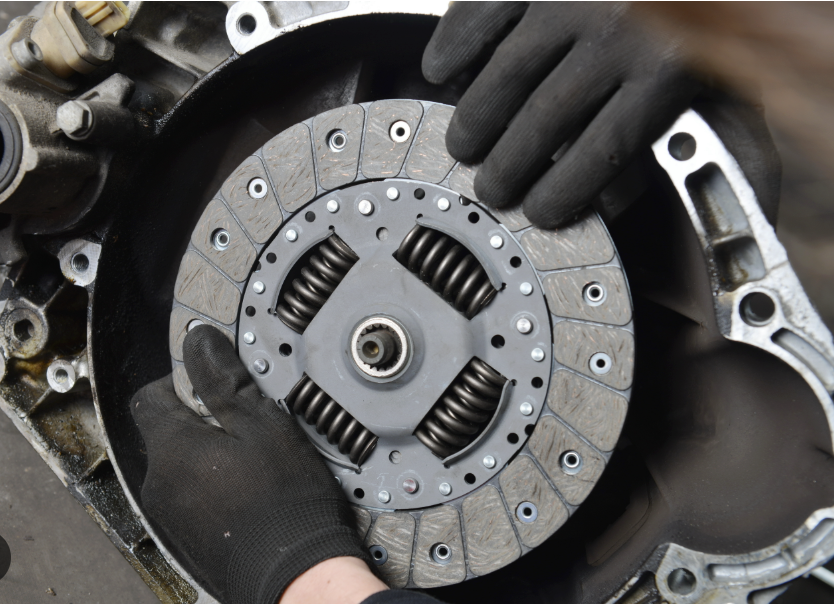Posted on 12/1/2025

Precision transmission care for German cars in Burbank Every driver appreciates a seamless shift, that effortless power transition making German cars feel as if they're gliding on rails. Whether you're behind the wheel of an Audi, Volkswagen, BMW, or Mercedes, this performance hinges on one crucial element: meticulous transmission maintenance. Contemporary dual-clutch and ZF transmissions are feats of engineering, offering rapid gear changes, impressive acceleration, and improved fuel efficiency. However, they demand specialized maintenance to remain in optimal condition. At Future Auto Service, we pay close attention to the finer details that safeguard your investment and ensure seamless shifting every time. What makes DSG and ZF transmissions different Unlike traditional automatic transmissions, dual clutch and ZF systems rely on intricate internal mechanisms that blend mechanical precision with sophisticated electronics. The fluid within these units serves as bot ... read more
Posted on 11/28/2025

Finding a gift for a car person can feel tricky if you are not under the hood every weekend. The good news is that useful gear does not have to be expensive or complicated. Think about how they drive, where they park, and whether they tinker at home. A thoughtful tool or gadget can make their daily commute easier, keep weekend projects moving, or add a little shine for the next adventure. How to Pick Car Gifts That Get Used Start with how the driver uses the vehicle. Long commutes call for comfort and organization. Apartment parking suggests compact tools and items that live in the trunk. DIY enthusiasts appreciate quality hand tools that last, not novelty pieces. When in doubt, choose something that solves a common pain point, like dead batteries, dim headlights, or messy cargo. Aim for items that are easy to store, simple to use, and built well enough to survive the glove box. Budget-Friendly Stocking Stuffers Under 25 Dollars Small items are a ... read more
Posted on 11/3/2025

Why small details make a big difference for your car’s health and longevity. Introduction: Under the Hood, Precision Matters Every driver knows the basics. Oil changes. Brake checks. Tire rotations. But if there’s one thing I’ve learned in my years at Future Auto Service, it’s that great car care goes far beyond the obvious. Precision work, the kind that happens quietly behind the scenes, is what separates a car that “runs” from one that performs flawlessly for years. Whether you're behind the wheel of a daily commuter or a precision-engineered European car, small details can significantly impact performance. Deep-dive diagnostics provide thorough insights, while vehicle-specific fluids enhance engineering efficiency. Closely monitoring part wear helps prevent failures before they occur. These thoughtful touches safeguard optimal performance, save you money, and enable ... read more
Posted on 10/31/2025

When your steering becomes harder to turn, especially at low speeds, it’s often a sign that your power steering system is under pressure—literally. In hydraulic systems, a drop in fluid level or pressure is usually the root cause. In electric systems, it may be a failing motor or sensor. Some of the most common culprits include: Low or leaking power steering fluid A worn or slipping serpentine belt Faulty power steering pump Problems with the electric power steering motor Clogged or restricted hoses If the issue started gradually, it might be due to fluid loss or wear. If it happened suddenly, it could be due to a snapped belt or electrical failure. Why Low Fluid Causes Stiff Steering In vehicles with hydraulic systems, fluid helps create the pressure that makes steering easier. If your car is low on fluid or if there’s a leak in the sys ... read more
Posted on 10/2/2025

Cold Starts and Car Batteries: What’s the Deal In Burbank, sunny skies and mild temperatures are typical for most of the year. However, when October arrives, chilly early mornings become more frequent. Though you might enjoy this refreshing change, your car battery may not be as enthusiastic. Early morning cold can notably affect its performance. If you've ever turned the key only to hear a sluggish crank or nothing at all, it could be a sign that your battery needs attention. Why Your Battery Struggles in Cold Weather Car batteries generate the electrical charge required to start your vehicle through chemical reactions. However, when temperatures decrease, these reactions slow down, causing the battery to work harder to produce the same level of power. Even in Southern California, a shift from a warm afternoon to a chilly morning can strain an already struggling battery. When you factor in additional demands on your battery such as heaters, defrosters, and seat warm ... read more